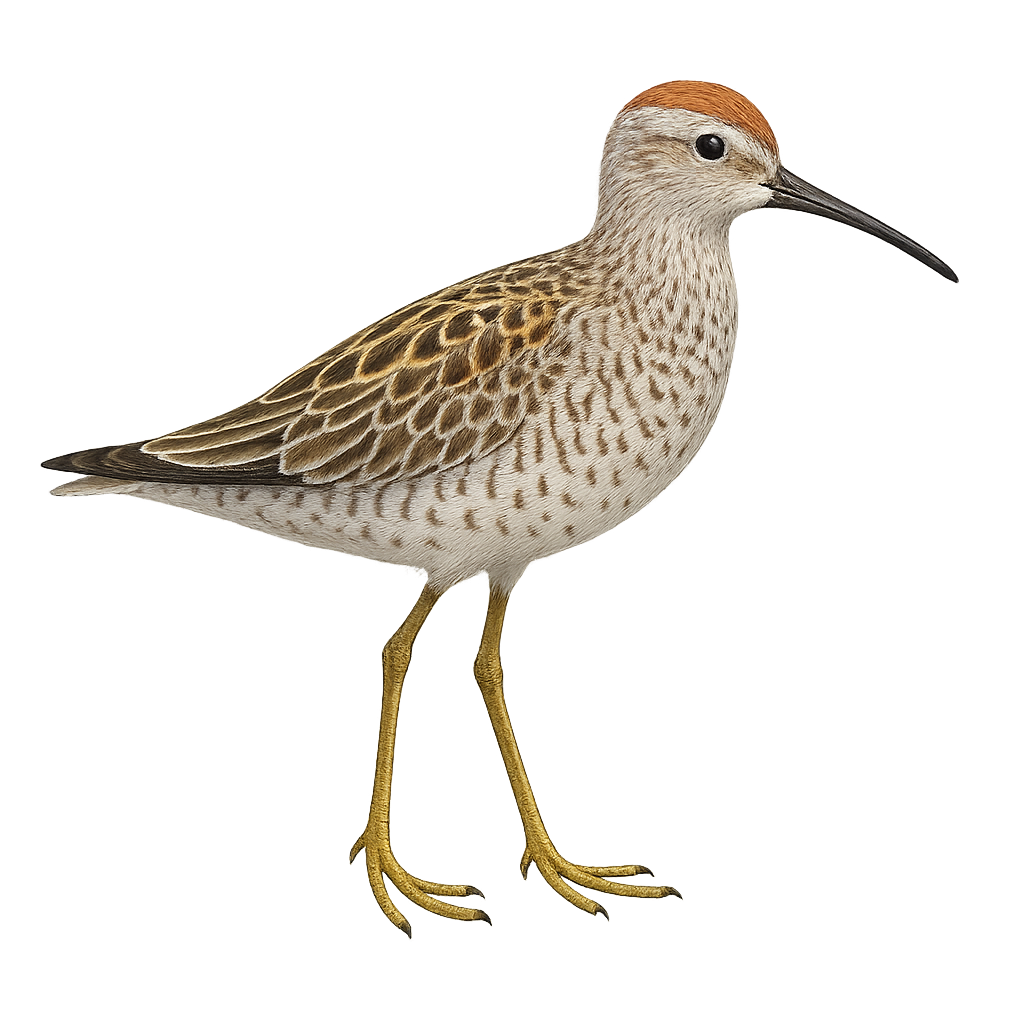Your wildlife photography guide.
Explore the stilt sandpiper in detail, study its behavior, prepare your shots.
Where to observe and photograph the stilt sandpiper in the wild
Learn where and when to spot the stilt sandpiper in the wild, how to identify the species based on distinctive features, and what natural environments it inhabits. The WildlifePhotographer app offers tailored photography tips that reflect the stilt sandpiper’s behavior, helping you capture better wildlife images. Explore the full species profile for key information including description, habitat, active periods, and approach techniques.
Stilt Sandpiper
Scientific name: Calidris himantopus

IUCN Status: Least Concern
Family: SCOLOPACIDAE
Group: Birds
Sensitivity to human approach: Suspicious
Minimum approach distance: 10 m
Courtship display: May to June
Incubation: 19-22 jours
Hatchings: June to July
Habitat:
Marshes, mudflats, wetlands
Activity period :
Primarily active during the day, with peak activity in the morning and late afternoon.
Identification and description:
The Stilt Sandpiper, Calidris himantopus, is a medium-sized shorebird known for its long legs and slightly curved bill. It displays a striking breeding plumage with brown and white patterns on its head and back. Outside the breeding season, its plumage becomes duller with grayish tones. It primarily inhabits wetlands, marshes, and mudflats, feeding on small invertebrates. A migratory bird, it breeds in Arctic regions and migrates south for the winter. Its flight is swift and direct, often in small flocks. Although its conservation status is currently stable, habitat degradation poses a potential threat.
Recommended lens:
400mm – adjust based on distance, desired framing (portrait or habitat), and approach conditions.
Photography tips:
To photograph the Stilt Sandpiper, it's advisable to use a telephoto lens of at least 400mm to capture detailed images without disturbing the bird. Approach slowly and discreetly, using natural elements as cover. The best opportunities often arise early in the morning or late afternoon when the light is soft and golden. Focus on marshes and mudflats where these birds actively feed. Be patient and wait for the bird to become accustomed to your presence to capture natural and authentic shots.
The WildlifePhotographer App is coming soon!
Be the first to explore the best nature spots, track rutting seasons, log your observations, and observe more wildlife.
Already 1 430 wildlife lovers subscribed worldwide

